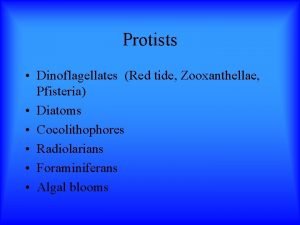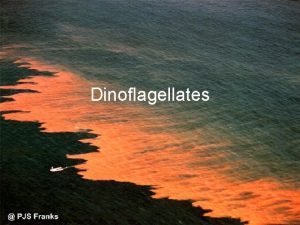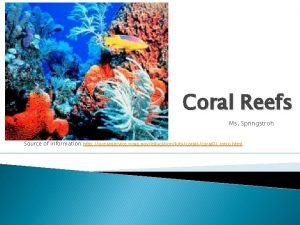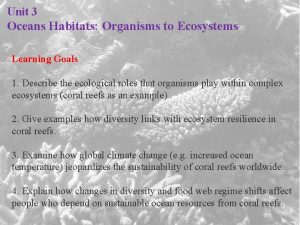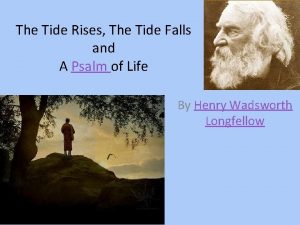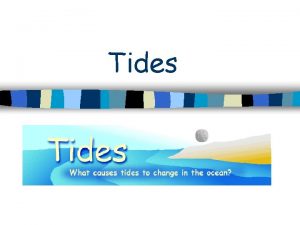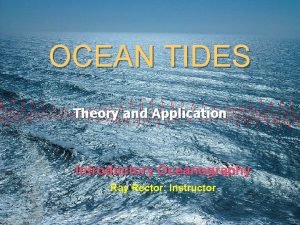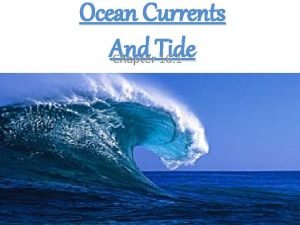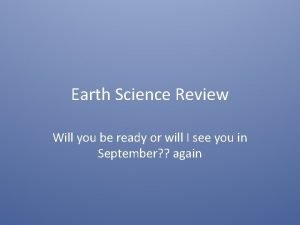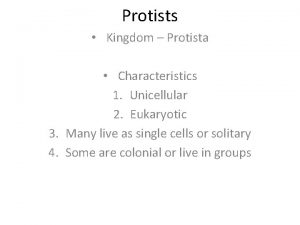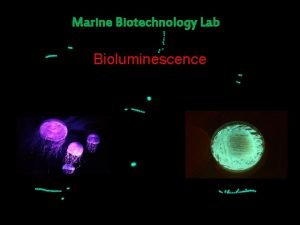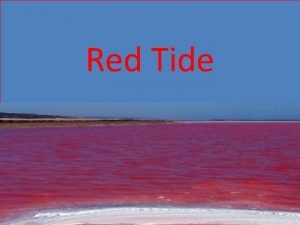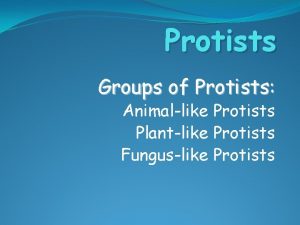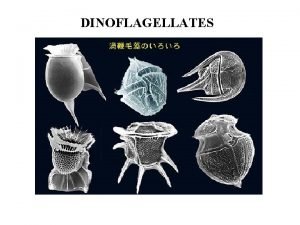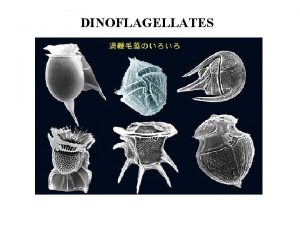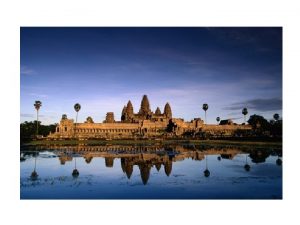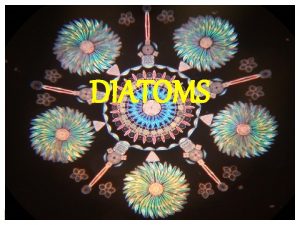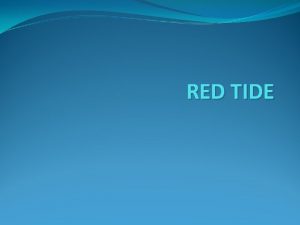Protists Dinoflagellates Red tide Zooxanthellae Pfisteria Diatoms Cocolithophores











- Slides: 11

Protists • Dinoflagellates (Red tide, Zooxanthellae, Pfisteria) • Diatoms • Cocolithophores • Radiolarians • Foraminiferans • Algal blooms

Dinoflagellates • marine protists, some freshwater • mostly unicellular • half are photosynthetic- primary producers of aquatic food chains • some live in mutualistic relationships with cnidarians, some are parasitic, some are carnivorous • two flagella- one transverse (lateral) and one longitudinal (posterior) • move in a whirling motion caused by transverse flagellum • have a submembrane made of cellulose--makes an “armor”

Red Tide • Certain dinoflagellates cause large algal blooms in warm coastal waters (such as along the east coast and in the Gulf of Mexico) • turn the water reddish brown because of xanthophylls in the chloroplasts • Shellfish eat the blooms and concentrate toxic compounds released by the dinoflagellate cells--toxic to other organisms

Zooxanthellae • golden-brown endosymbiont (lives inside) of marine organisms, especially anthozoans (coral) • typically dinoflagellate algae, but sometimes diatoms • aquired by ingestion • reproduce asexually by budding • autotrophs • gives coral 98% of its energy--in return is given protection, shelter, CO 2 for photosynthesis- symbiosis

Pfisteria • found in Pamlico and Neuse Rivers in NC • complicated life cycle- 24 physical forms, and can change forms quickly • most are non-toxic, but some have forms in their life cycles that are toxic • two toxins have been identified that can cause skin lesions and are neurotoxins

Diatoms • • phylum Bacillariophyta eukaryotic algae unicellular, but some form colonies cell wall made of hydrated silica in organic matrix called a frustule • marine and freshwater • yellow or brown in color • asexual or sexual reproduction- sperm only flagellated cells in this phylum

Cocolithophores • algae, protists, and phytoplankton in class haptophytes • have calcareous (calcium carbonate) shells- called cocoliths • index fossils- used to solve stratigraphic problems • also nanofossilsindicators of salinity and temp. changes on ocean surface

Radiolarians • phylum Actinopoda- “ray feet” • marine • shells made of silica (glass) • after radiolarians die, their shells settle on the sea floor and decompose into a siliceous ooze • often contain symbiotic algae like zooxanthellae

Foraminiferans • marine-live in sand or attached to rocks and algaealso some families abundant in plankton • have porous shells- “Foraminifera” means “to bear little holes” • shells are multichambered, made of organic material hardened with Ca. CO 3 • cytoplasm extends through pores- aids in swimming, shell formation, feeding • symbiotic algae often lives under shells • 90% are fossils

Algal Blooms • rapid increase in the population of algae in an aquatic system • blooms of dinoflagellates cause red tides- produce neurotoxins • some algal blooms caused by an excess of nutrientsalgae uses up all O 2 and other organisms can’t survive (eutrophication, in freshwater lakes)

Sources • Campbell, Neil A. Biology: Third Edition. Benjamin/Cummings Publishing Company: New York, 1993. • Wikipedia.
